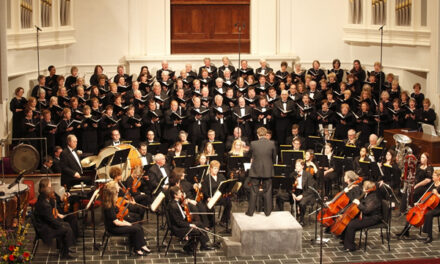Caroline Calouche perfectly illustrates the value of an arts community. The dancer already had a little company of her own, performing sporadically in Charlotte and Gastonia, when she discovered the wonders of aerial dance. After the influx of aerial dancers in Charlotte who appeared as guests with Moving Poets Theatre of Dance on various avant-garde programs – not to mention a Cirque du Soleil visitation during that same 2004-05 period – Calouche connected with the nationwide aerial dance network, learned the ropes, and reinvented herself as a dancer and a choreographer. Beginning its first full season of programs, Caroline Calouche & Co. offered Misterioso: Dream vs. Reality, a two-act composition studded with aerial choreography. The program also marked the coming-out for the 701 N. Tryon Theater at the Patricia McBride and Jean-Pierre Bonnefoux Center for Dance. Following in CC&Co’s footsteps, North Carolina Dance Theatre, the resident company at the McBride-Bonnefoux, will be presenting their first program at the 701 in November.
The venue is ideal for the technically-advanced brand of cutting-edge choreography Calouche now has to offer. Normally, at Cirque or at previous Moving Poets or Calouche productions, aerial dance is a discrete segment of a larger program, lasting 10-12 minutes at most, for which one or two pairs of silken ropes are pre-hung. Not based on any familiar story, as ballets often are to combat their inherent muteness, Misterioso is loosely and episodically structured in a fashion akin to Alice’s Adventures in Wonderland, with Calouche as Lucia ferried by a Dream Master to various locales and confrontations. Last year, when plans for the 701 were in progress, the space was set up as two adjoining rehearsal studios, divisible by a moveable partition. One of those studios has nicely tiered grandstand seating. The other is now outfitted as a stage, capable of supporting the quintets of aerialists that highlight each act of Misterioso while providing the sophisticated lighting that dramatizes the choreography and smoothes the transitions between episodes. Effectively veiling those transitions, when the dancers enter and prepare their equipment, eliminates the clumsiness that discourages choreographers from incorporating aerial into larger works. An evening-length work also requires a choreographer who has penetrated the levitating mysteries of aerial dance, which is why Misterioso is so unique.
After a soundless “Finding Sight” tableau, where Lucia, prompted by the Dream Master, interacted with seven of the other dancers, our heroine discovered the first aerial apparatus in “Levitation.” Hidden in a corner near the upstage wing, this aerial rig only emerged from darkness as Lucia approached. Even then, it was shrouded in a nebulous net and dimly lit – a seemingly liquid and cocoon-like medium for Calouche’s mesmerizing solo dance to the music of Pentaphobe. There was nothing quite so macabre or misterioso after that, but there were plenty of surprises. Six of the dancers humorously echoed the opening tableau in “How do you Say?” speaking jibberish to the music of Zilo Groove instead of remaining silent. Even more surprising, near the beginning of Act 2, the Dream Master spoke to the audience and invited Lucia to join us in the front row as we watched “Vaudeville Extravaganza.” This comedy medley culminated in a soft-shoe trio danced to “For Me and My Gal” by Reba Owens, Alison Hagaman, and Elizabeth Sturgis in truly tacky checkered vests– topping some fairly tacky magic from the Dream Master-turned-Ringmaster performed by Eric Treese.
The aerial quintets had more than sufficient variety to them. In Act 1, the five aerialists were spread symmetrically across the stage, Calouche in the middle surrounded by Sturgis, Dominique Anderson, Emily Burns, and Jamie Larkin. Late in Act 2, they were all ingathered over Lucia’s bed, like beneficent spirits protecting the dreamer as she emerged from sleep. In between these two fabric flights, Calouche managed to stage a fairly astonishing “Love/Hate” pas de deux with Brian Winn. Lucia was airborne in an elastic harness that had her bouncing up and down, propelled by her earthbound partner. We didn’t endure any awkward pauses as Calouche engaged and disengaged from the apparatus, nor was there any apparent difficulty in maintaining the intended synchronization with the music of Yann Tiersen as our heroine bobbed up and down.
Among the wholly earthbound pieces, I was most impressed by the “Things That Bite” segment featuring the full cast dancing to music by Massive Attack. Here the costumes by Wendy Yang Bailey were as purposeful as those of the vaudeville, predatory black and lupine gray, punctuated by long colorful tails. Composed of regulars, apprentices, trainees, and students, Calouche & Co. makes a solid impression collectively. If they can all make it to the 14th Annual Aerial Dance Festival next July in Boulder, Colorado, they will have one very provocative work to put on display.











